Canon imageFORMULA R10 User Manual
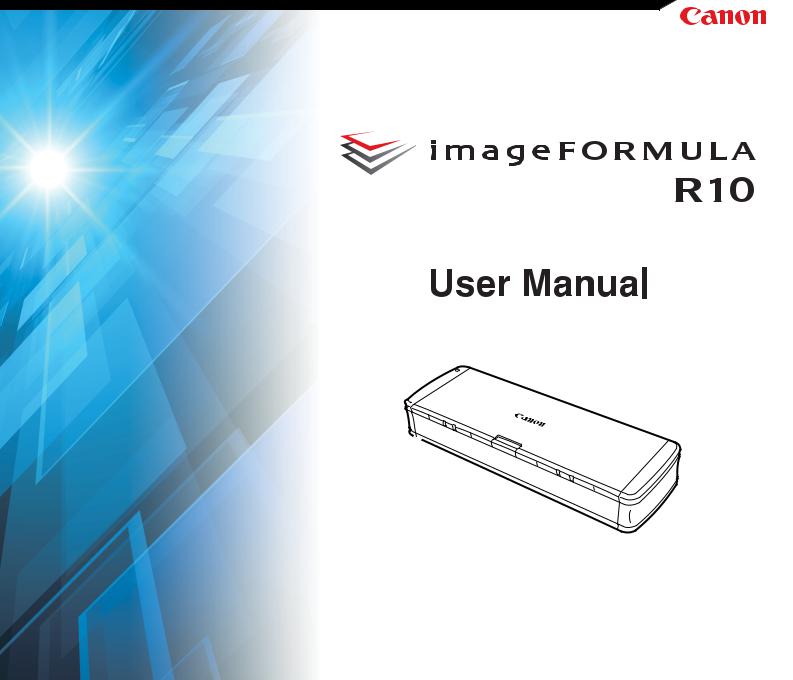
Please read this manual before operating this scanner. After you finish reading this manual, store it in a safe place for future reference.
6T3-0016-E1.00
Contents |
|
Contents ............................................................................................. |
2 |
Chapter 1 Introduction ........................................................................ |
4 |
About This Manual .......................................................................... |
4 |
Features of the Scanner ................................................................. |
5 |
Names and Functions of Parts ........................................................ |
6 |
Power Supply .................................................................................. |
8 |
Regulations ................................................................................... |
10 |
Trademarks ................................................................................... |
12 |
System requirements .................................................................... |
12 |
Chapter 2 Important Safety Instructions ........................................... |
14 |
Installation Location ...................................................................... |
14 |
Moving the Scanner ...................................................................... |
15 |
Handling ........................................................................................ |
15 |
Disposal ........................................................................................ |
16 |
When sending the scanner for repairs .......................................... |
16 |
Chapter 3 Connecting the Scanner .................................................. |
17 |
Connecting the Scanner to the Computer ..................................... |
17 |
Turning the Power ON .................................................................. |
18 |
Chapter 4 Placing Documents .......................................................... |
19 |
Documents .................................................................................... |
19 |
Loading a document ..................................................................... |
21 |
Loading cards ............................................................................... |
22 |
Chapter 5 Scanning with CaptureOnTouch Lite ............................... |
23 |
Scanning with CaptureOnTouch Lite ............................................ |
23 |
Starting and Exiting CaptureOnTouch Lite ................................... |
27 |
Operations for the scanned image edit window ............................ |
28 |
Setting the scan mode .................................................................. |
31 |
Configuration and Functions of the Advanced Settings Dialog |
|
Box ................................................................................................ |
33 |
Scan Panel .................................................................................... |
36 |
Setting Basic Scanning Conditions ............................................... |
36 |
Function Restrictions Depending on Mode Setting ....................... |
39 |
Setting the output .......................................................................... |
41 |
Environmental Settings ................................................................. |
42 |
Chapter 6 Special Scanning ............................................................. |
43 |
Practical Examples ....................................................................... |
43 |
When you want to delete the images of the blank pages in two-sided |
|
documents .................................................................................... |
43 |
Practical Examples ....................................................................... |
44 |
When you do not want to scan colored lines and text ................... |
44 |
Practical Examples ....................................................................... |
45 |
When you want to enhance the color red ..................................... |
45 |
Practical Examples ....................................................................... |
46 |
When you want to enhance contours in images ........................... |
46 |
Practical Examples ....................................................................... |
47 |
When you want to make lines or characters in the scanned images |
|
thicker ........................................................................................... |
47 |
Practical Examples ....................................................................... |
48 |
How to produce a picture quality scan .......................................... |
48 |
Practical Examples ....................................................................... |
49 |
When you want to enhance text that is difficult to read because of factors |
|
such as the background of the scanned document ...................... |
49 |
Practical Examples ....................................................................... |
50 |
To correct tilted documents and images ....................................... |
50 |
Practical Examples ....................................................................... |
51 |
When you want to detect multiple pages fed at the same time ..... |
51 |
Practical Examples ....................................................................... |
52 |
When you want to match the orientation of images to the text when |
|
scanning a mixture of pages with different text orientations ......... |
52 |
Practical Examples ....................................................................... |
53 |
When you want to rotate the images of a document placed horizontally |
|
to correct the orientation ............................................................... |
53 |
Chapter 7 Regular Maintenance ....................................................... |
55 |
Cleaning the Scanner ................................................................... |
55 |
Cleaning the Scanning Glass and the Rollers .............................. |
56 |
2
Chapter 8 Detaching and attaching the feed roller and separation |
|
pad .................................................................................................... |
57 |
Replacing Consumable Parts ....................................................... |
57 |
Detaching and attaching the Feed Roller ...................................... |
59 |
Detaching and attaching the separation pad ................................ |
60 |
Chapter 9 Updating CaptureOnTouch Lite ....................................... |
62 |
How to Update .............................................................................. |
62 |
Chapter 10 Troubleshooting ............................................................. |
63 |
Clearing a Paper Jam ................................................................... |
63 |
Common Problems and Solutions ................................................ |
65 |
Software Troubleshooting ............................................................. |
67 |
Useful tips ..................................................................................... |
68 |
Chapter 11 Appendix ........................................................................ |
70 |
Specifications ................................................................................ |
70 |
Replacement parts ........................................................................ |
71 |
Option ........................................................................................... |
71 |
External Dimensions ..................................................................... |
72 |
3

Chapter 1 Introduction |
About This Manual |
|
|
Thank you for purchasing the Canon imageFORMULA R10 Document Scanner.
In order to fully understand the features of this scanner and use them more effectively, please read this manual and the manuals shown below thoroughly before using the product. After reading, store the manual in a safe place for future reference.
About This Manual................................................................................ |
4 |
Features of the Scanner....................................................................... |
5 |
Names and Functions of Parts ............................................................ |
6 |
Power Supply ........................................................................................ |
8 |
Regulations ......................................................................................... |
10 |
Trademarks ......................................................................................... |
12 |
System requirements ......................................................................... |
12 |
Manuals for the Scanner
Documentation for this scanner consists of the following manuals.
Setup Guide
This manual describes the flow from setting up the scanner to scanning. Please follow the procedures in the Setup Guide to set up the scanner.
User Manual (this manual)
This manual contains complete explanations for operations on the scanner. It is provided on the Canon website as an electronic manual. https://soft.canon-elec.co.jp/ims/r10/
In addition, a shortcut icon for the above website is displayed on the computer when the scanner is turned ON. For details, see "Chapter 5 Scanning with CaptureOnTouch Lite" on p.23.
Symbols Used in This Manual
The following symbols are used in this manual to explain procedures, restrictions, handling precautions, and instructions that should be observed for safety.
Indicates a warning concerning operations that may lead to death or injury to persons if not performed correctly. To use the machine safely, always pay attention to these warnings.
Indicates a caution concerning operations that may lead to injury to persons, or damage to property if not performed correctly. To use the machine safely, always pay attention to these cautions.
4
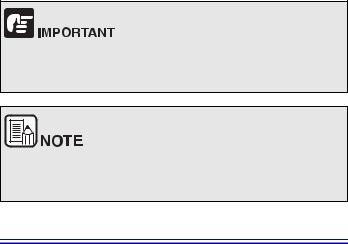
Indicates operational requirements and restrictions. Be sure to read these items carefully to operate the machine correctly, and avoid damage to the machine.
Indicates a clarification of an operation, or contains additional explanations for a procedure. Reading these notes is highly recommended.
Features of the Scanner
The main features of the R10 document scanner are described below.
Compact Size
The scanner has a compact size of 285 mm (W) x 40 mm (H) x 95
mm(D) (11.22" x 1.57" x 3.74") when the document feed tray is closed.
Bus-Powered
Supporting USB 2.0 bus power, the scanner is capable of scanning at
aspeed of 12 black-and-white (grayscale) pages per minute and 9 24-bit color pages per minute using bus power via a single USB cable (200-dpi simplex scanning of A4 documents is assumed in both examples).
Auto Start Function
Scanning is enabled immediately by simply connecting the scanner to a computer and starting the CaptureOnTouch Lite software that comes preinstalled in the scanner. There is no need to install a driver.
Auto Power ON/OFF
This feature automatically turns the power ON or OFF when the feed tray is opened or closed.
Equipped with Feeder
Up to 20 pages of a document can be loaded and then fed continuously, or one at a time.
Dedicated Card Slot
The scanner includes a dedicated slot for scanning plastic cards.
Color and Grayscale Support
The scanner is capable of scanning a document in 24-bit color or 256-level grayscale.
Two-Sided Scanning
The scanner supports one-sided and two-sided scanning. Using the skip blank pages function enables you to scan without worrying about whether to scan one side or both sides of a document because scanned images of blank pages are not saved.
Auto Color Detection
The scanner detects whether the scanned document is in color, grayscale, or black and white, and saves the image accordingly.
Full Auto Mode
A Full Auto Mode is provided in CaptureOnTouch Lite to allow scanning under automatically determined conditions. Scanning conditions such as the color mode and page size are set automatically based on the document being scanned.
Auto Resolution Detection
When enabled in the CaptureOnTouch Lite, this function detects the content of documents and determines the scanning resolution automatically.
Document Size Auto Detection
This feature enables automatic detection of the page size of a scanned document. The space around the edges of documents can be omitted during scanning, even for non-standard size documents.
Deskew
Even if a document is slanted when fed into the scanner, the scanned image can be straightened.
Text Enhanced Mode
Advanced Text Enhancement II is provided to improve the readability when scanning documents in which the background is uniform and both the text and background are light.
*This feature may not work effectively for some documents
5
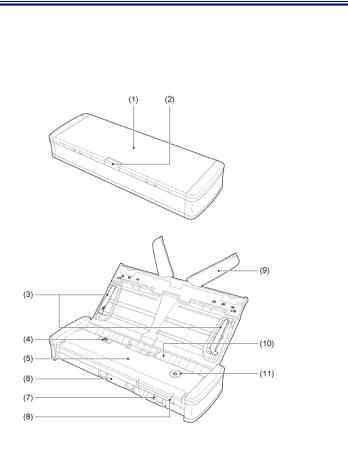
Drop-Out Color
This feature makes it possible to ignore specific colors when scanning a document.
Picture Mode
The [Apply corrections suitable for photographs] features compensates for underexposed and overexposed images for photoquality scans with finer gradation.
Prescan
This feature allows you to scan just the first page of a document, confirm the scanned image and adjust the brightness and contrast, and then scan the remaining pages of the document.
Auto Detection of Document in Feeder
An automatic start function is provided for detecting when a document is placed in the feeder and then starting scanning automatically.
Names and Functions of Parts
This section describes the name and function of each part. Make sure to read this section and familiarize yourself with the parts of the scanner before using the scanner.
Front View/Right-Side View
(1)Document Feed Tray
This tray is for feeding documents. Open it when scanning documents.
(2)Feed Tray Release Lever
Press this lever to release the document feed tray when opening the tray.
6

(3)Document Guides
These guides ensure documents are fed straight (one on the left and right sides). Raise the guides when loading a document, and then align them to both sides of the document to be scanned.
(4)Feeder Cover Release Lever
Pull this lever to open the feeder cover when cleaning the scanner.
(5)Feeder Cover
Open this when cleaning the scanner.
(6)Eject Outlet
This outlet is for ejecting documents when scanning is completed.
(7)Card Slot
Insert plastic cards here.
(8)Card Guides
These guides ensure that cards inserted in the card slot are fed straight.
(9)Feed Extension Plate
Open this plate to support the document when loading a long document.
(10)Feed Inlet
Insert the document to be scanned.
(11)Start Button
Press this button when CaptureOnTouch Lite is running to start scanning.
When the power of the scanner is ON, this button lights and indicates the status of the scanner as shown below.
Start button |
Meaning |
|
status |
||
|
||
|
|
|
Lit |
The power of the scanner is ON. |
|
|
|
|
|
• Paper is jammed. |
|
|
• A double feed has been detected and the |
|
Flashing |
scanner has stopped. |
|
|
• The top unit is open. |
|
|
• Another scanner error has occurred. |
|
|
|
The Start button may blink slowly when the USB cable is connected and the feed tray is opened. When this occurs, wait for the power indicator to stop blinking and light steadily before using the scanner.
7
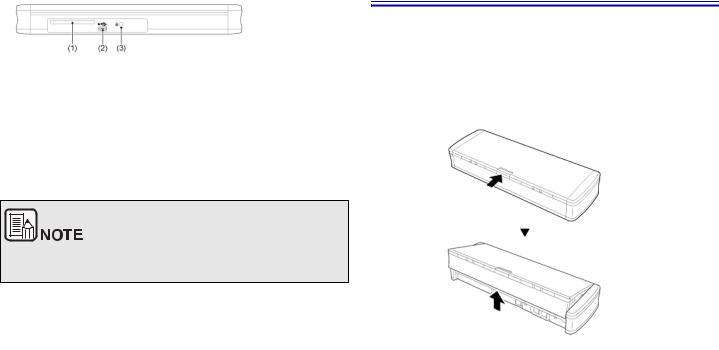
Back View
Power Supply
(1)Rear Card Slot
When a plastic card is fed, a portion of the card protrudes from here momentarily.
(2)USB Connector
Connect the USB cable supplied with the scanner (or one that supports Hi-Speed USB 2.0).
(3)Theft Prevention Hole (Security Slot)
Attach a key chain, etc. here to prevent the scanner from being stolen.
This scanner does not have a power switch. For details, see "Power Supply" on p.8.
The power of the scanner is designed to turn ON when the feed tray is opened or closed. To turn the power ON or OFF, operate the scanner as described below.
Turning ON the Power
1 Raise the feed tray slightly while pressing the feed tray release lever.
8
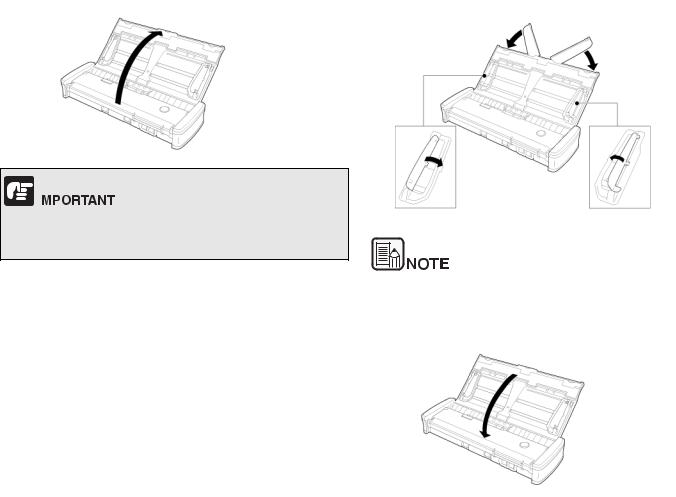
2 Extend the front panel of the feed tray before opening the entire feed |
Turning OFF the Power |
|
tray. |
|
|
The scanner turns ON, and the Start button lights. |
1 If the feed extension plates and document guides are raised, lower |
|
|
|
them. |
|
|
|
|
|
|
The Start button may blink slowly when the USB cable is connected and the feed tray is opened. When this occurs, wait for the power indicator to stop blinking and light steadily before using the scanner.
Do not close the feed tray while the document guides are spread open. This can damage to the scanner and result in malfunction.
2 Close the feed tray.
The scanner turns OFF.
9
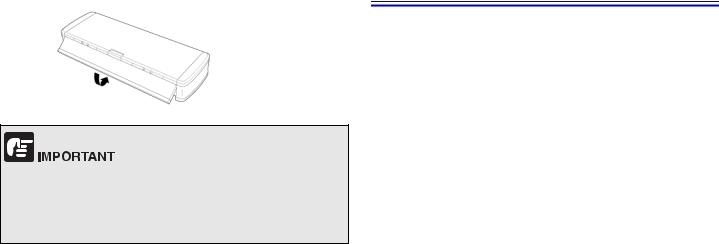
3Push the section (front cover) at the front of the feed tray to close it.
When not using the scanner, close the scanner's Document Feed Tray or disconnect the USB cable.
When transporting the scanner, make sure to close the front cover beforehand. Failure to do so may result in the feed tray opening and causing the scanner to fall.
Supplying Power to the Scanner
The scanner is bus powered by connecting it to a computer with a USB cable. Power cannot be supplied from a power outlet using an AC adapter, etc.
Regulations
FCC REGULATIONS (For North America)
Document Scanner, Model 6130200
This device complies with Part 15 of FCC Rules and Industry Canada licence-exempt RSS standard(s). Operation is subject to the following two conditions: (1) this device may not cause interference, and (2) this device must accept any interference, including interference that may cause undesired operation of this device.
Le présent appareil est conforme aux la partie 15 des règles de la FCC et CNR d'Industrie Canada applicables aux appareils radio exempts de licence. L'exploitation est autorisée aux deux conditions suivantes : (1) l'appareil ne doit pas produire de brouillage, et (2) l'utilisateur de l'appareil doit accepter tout brouillage radioélectrique subi, même si le brouillage est susceptible d'en compromettre le fonctionnement.
Note: This equipment has been tested and found to comply with the limits for a Class B digital device, pursuant to Part 15 of the FCC Rules. These limits are designed to provide reasonable protection against harmful interference in a residential installation. This equipment generates, uses, and can radiate radio frequency energy and, if not installed and used in accordance with the instructions, may cause harmful interference to radio communications. However, there is no guarantee that interference will not occur in a particular installation. If this equipment does cause harmful interference to radio or television reception, which can be determined by turning the equipment OFF and ON, the user is encouraged to try to correct the interference by one or more of the following measures:
Reorient or relocate the receiving antenna.
Increase the separation between the equipment and receiver.
Connect the equipment into an outlet on a circuit different from that to which the receiver is connected.
Consult the dealer or an experienced radio/TV technician for help.
Use of shielded cable is required to comply with Class B limits in Subpart B of Part 15 of FCC Rules.
Do not make any changes or modifications to the equipment unless otherwise specified in the manual. If such changes or modifications should be made, you could be required to stop operation of the equipment.
10

Canon U.S.A. Inc.
One Canon Park, Melville, NY 11747, U.S.A.
Tel. No. (800)652-2666
ENERGY STAR® Office Equipment Program
This program is for U.S.A and Canada.
As an ENERGY STAR® Partner, CANON ELECTRONICS INC. has determined that this machine meets the
ENERGY STAR® Program guidelines for energy efficiency.
The ENERGY STAR® Office Equipment Program is an international program that promotes energy saving through the use of computers and other office equipment. The program backs the development and dissemination of products with functions that effectively reduce energy consumption. It is an open system in which business proprietors can participate voluntarily. The targeted products are office equipment, such as computers, monitors, printers, fax, machine, copiers, and scanners. The standards and logos are uniform among participating nations. This model doesn’t provide "setting options" for power management.
Model Names
The following names may be provided for the safety regulations in each sales region of the Document Scanner.
R10: Model 6130200
Reproduction Warning
This device is designed to be used in a legal manner, in accordance with all applicable laws, including, but not limited to, counterfeit and copyright laws, as well as laws pertaining to national security.
Any person(s) found to have reproduced any of the following materials (regardless of whether such reproduction was intentional or not) for the purpose of misrepresenting such material as the original may be prosecuted in accordance with the applicable laws and regulations.
Paper money or bank notes (domestic and foreign)
Postage stamps, revenue stamps, or other similar stamps
Stock certificates, bond certificates, promissory notes, cheques, or other valuable certificates
Passports, licenses, or other certificates or documents issued by government officials or agencies
This is not an exhaustive list.
Canon is not responsible for how this scanner is used by an individual. Please note that certain intellectual property is protected by copyright law, and copyrighted items may not be reproduced without the express permission of the copyright holder except for personal or household use under limited circumstances.
Disclaimers
The information in this document is subject to change without notice.
CANON ELECTRONICS INC. MAKES NO WARRANTY OF ANY KIND WITH REGARD TO THIS MATERIAL, EITHER EXPRESS OR IMPLIED, EXPECT AS PROVIDED HEREIN, INCLUDING WITHOUT LIMITATION, THEREOF, WARRANTIES AS TO MARKETABILITY, MERCHANTABILITY, FITNESS FOR A PARTICULAR PURPOSE OF USE OR NON-INFRINGEMENT. CANON ELECTRONICS INC. SHALL NOT BE LIABLE FOR ANY DIRECT, INCIDENTAL, OR CONSEQUENTIAL DAMAGES OF ANY NATURE, OR LOSSES OR EXPENSES RESULTING FROM THE USE OF THIS MATERIAL.
CANON ELECTRONICS INC. IS NOT LIABLE FOR THE STORAGE AND HANDLING OF DOCUMENTS SCANNED WITH THIS PRODUCT, OR THE STORAGE AND HANDLING OF RESULTING SCANNED IMAGE DATA.
IF YOU INTEND TO DISCARD THE ORIGINALS OF SCANNED DOCUMENTS, YOU THE CUSTOMER ARE RESPONSIBLE FOR INSPECTING THE SCANNED IMAGES AND VERIFYING THAT DATA IS INTACT.
THE MAXIMUM LIABILITY OF CANON ELECTRONICS INC. UNDER THIS WARRANTY IS LIMITED TO THE PURCHASE PRICE OF THE PRODUCT COVERED BY THE WARRANTY.
11

Trademarks
Canon and the Canon logo are registered trademarks, of Canon Inc. in the United States and may also be trademarks or registered trademarks in other countries.
imageFORMULA is a trademark of CANON ELECTRONICS INC.
Microsoft, Windows, PowerPoint, and SharePoint are registered trademarks or trademarks of Microsoft Corporation in the United States and other countries.
Microsoft product screen shot(s) reprinted with permission from Microsoft Corporation.
OS X and macOS are the trademarks of Apple Inc., registered in the U.S. and other countries.
ENERGY STAR® is a registered trademark of the United States Environmental Protection Agency.
Other product and company names herein may be the trademarks of their respective owners. However, the ™ and ® symbols are not used
in this document.
Copyright
Copyright 2020 by CANON ELECTRONICS INC. All rights reserved.
No part of this publication may be reproduced or transmitted in any form or by any means, electronic or mechanical, including photocopying and recording, or by any information storage or retrieval system without the prior written permission of CANON ELECTRONICS INC.
System requirements
To use the scanner, your computer must satisfy the following system requirements.
Computer
•CPU: Intel Core 2 Duo 1.66GHz or faster  Intel Core i7 2.3GHz or faster
Intel Core i7 2.3GHz or faster 
•Memory: 1 GB or more  8 GB or more
8 GB or more 
•Hard disk: 3 GB or more available space required for installation of all software
•USB interface: Hi-Speed USB2.0
•Monitor: Resolution of 1024 × 768 (XGA) or better recommended. 
•Optical drive: Drive capable of reading CDs/DVDs.
Operating system
•Microsoft Windows 8.1 (32-bit and 64-bit editions)
•Microsoft Windows 10 (32-bit and 64-bit editions)
•macOS 10.13
•macOS 10.14
•macOS 10.15
This is the environment as of May 2020.
For the latest software support information, go to the Products page on the Canon website.
12

Use the USB interface provided as standard with your computer. However, normal operation is not guaranteed with all USB interfaces, even if present as standard equipment on the computer. For details, consult your local authorized Canon dealer.
Scanning speeds are lower if your computer’s standard USB interface is USB Full-Speed (equal to USB 1.1.)
The USB cable you are using should be the one originally included with the scanner.
If the CPU, memory, interface card, and other specifications do not satisfy the installation requirements, the scanning speed may be greatly reduced and transmission may take a long time.
Even if the computer satisfies the system requirements, the scanning speed may vary, depending on the specification of the computer and the environment.
In Windows 10 tablet mode, the software may disrupt the display.
Precautions for Use in 64-bit Operating Systems (Windows only)
Scanning speed may vary depending on the specifications of your computer.
13
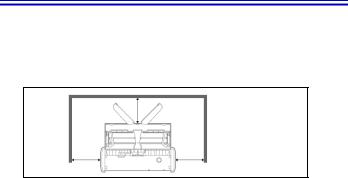
Chapter 2 Important Safety
Instructions
To ensure the safe operation of this scanner, be sure to read the safety warnings and precautions described below.
Installation Location........................................................................... |
14 |
Moving the Scanner............................................................................ |
15 |
Handling .............................................................................................. |
15 |
Disposal............................................................................................... |
16 |
When sending the scanner for repairs ............................................. |
16 |
Installation Location
The performance of this scanner is affected by the environment in which it is installed. Make sure that the location where the scanner is installed meets the following environmental requirements.
Provide adequate space around the scanner for operation, maintenance, and ventilation.
Scanned documents are ejected from the front of the scanner. Be sure to provide sufficient space at the front of the scanner.
Avoid installing the machine in direct sunlight.
Avoid locations where a considerable amount of dust accumulates.
Avoid warm or humid locations, such as in the vicinity of a water faucet, water heater, or humidifier. Avoid locations where ammonia gas is emitted. Avoid locations near volatile or flammable materials, such as alcohol or paint thinner.
Avoid locations that are subject to vibration.
Avoid exposing the scanner to rapid changes in temperature. If the room in which the scanner is installed is cold but rapidly heated, water droplets (condensation) may form inside the scanner. This may result in a noticeable degradation in scanning quality. The following conditions are recommended for optimal scanning quality:
Room temperature: 10°C to 32.5°C (50°F to 90.5°F) Humidity: 25% to 80% RH
Avoid installing the scanner near equipment that generates a magnetic field (e.g. speakers, televisions, or radios.)
14
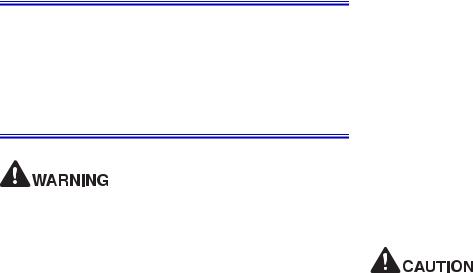
Moving the Scanner
When moving the scanner, always hold it with both hands to avoid dropping it.
Make sure to disconnect USB cable and when moving the scanner. If the scanner is carried with a cable connected, the connector may be damaged or cause the scanner to fall and result in personal injury or damage to the scanner.
Handling
If the scanner makes strange noises, or gives off smoke, heat, or strange odors, or the scanner does not function or other abnormalities occur when you use the scanner, immediately close the feed tray, turn the scanner OFF, and disconnect the USB cable. Then, contact your local authorized Canon dealer or service representative for further information.
Do not drop the scanner, or subject it to impact or strong shock. Should the scanner ever become damaged, immediately close the feed tray, turn the scanner OFF, and disconnect the USB cable. Then, contact your local authorized Canon dealer or service representative for further information.
Before moving the scanner, make sure to close the feed tray, turn the scanner OFF, and disconnect the USB cable.
Note the following precautions whenever using the scanner. Failure to do so may result in a fire or electric shock.
Never place alcohol, benzene, paint thinner, or other flammable substances near the scanner.
Do not allow water or flammable substances (alcohol, benzene, paint thinner, etc.) to spill inside the scanner, as this may result in a fire or electric shock.
Do not cut, damage, or modify the USB cable. Do not place heavy objects on the cable, and do not pull or excessively bend the cable.
Never connect the USB cable when your hands are wet.
Do not knot or coil the USB cable, as this may result in a fire or electric shock.
Use only the USB cable supplied with the scanner.
Do not attempt to dismantle the scanner or modify it in any way, as this is dangerous and may result in a fire or electric shock.
Do not use flammable aerosol spray products near the scanner.
When cleaning the scanner, turn the scanner OFF and disconnect the USB cable.
When disconnecting the USB cable, grasp it firmly by its connector. Do not pull directly on the USB cable, as this may damage or expose the cable's internal wiring, resulting in a fire or electric shock.
Clean the scanner using a slightly dampened cloth that has been well wrung out. Never use alcohol, benzene, paint thinner, or any other flammable substance.
Customers with Pacemakers
This product emits a low level magnetic field.
If you have a cardiac pacemaker or other medical implant and feel any abnormalities, move away from the product and consult your doctor.
Do not install the scanner on a surface that is unstable, tilted, or subject to excessive vibrations. Doing so may cause the scanner to fall, resulting in personal injury or damage to the scanner.
Never place small objects, such as staples, paper clips, or jewelry on the scanner. These items may fall into the scanner and cause a fire or electric shock. If such objects ever fall inside the scanner, immediately close the feed tray, turn the scanner OFF, and disconnect the USB cable. Then, contact your local authorized Canon dealer or service representative to have the unit serviced.
Do not locate the scanner in a humid or dusty location. Doing so may result in a fire or electric shock.
Do not place objects on top of the scanner. Such objects may tip or fall over, resulting in personal injury.
When disconnecting the USB cable, grasp it firmly by its connector. Do not pull directly on the USB cable, as this may damage or expose the cable’s internal wiring, resulting in a fire or electric shock.
Leave sufficient space around the USB cable so that it can be disconnected easily. If objects are placed around the USB cable, you will be unable to disconnect it in an emergency.
15

Do not allow water or flammable substances (alcohol, benzene, paint thinner, etc.) to spill inside the scanner, as this may result in a fire or electric shock.
If you will not be using the scanner for an extended period of time, such as during consecutive holidays, disconnect the USB cable for safety.
Do not wear loose clothing or jewelry that may get caught in the scanner while you are using it. This may result in personal injury. Be extra careful of neckties and long hair. If anything becomes caught in the scanner, immediately disconnect the power to stop the scanner.
Be careful when placing paper in the scanner and when removing jammed paper. It is possible to cut your hand on the edge of a sheet of paper.
Disposal
When disposing of this scanner, be sure to follow all local ordinances and laws or consult with the retailer who sold you the scanner.
When sending the scanner for repairs
When a request is made for repairs, the scanner needs to be sent to the specified address. When sending the scanner, use the packing box in which it came. Firmly secure the scanner with packaging material when you place it in the packing box.
16
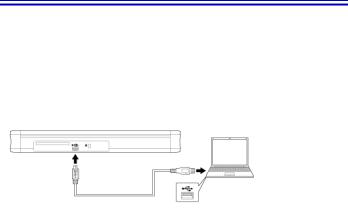
Chapter 3 Connecting the Scanner
Connect the scanner to the computer and power outlet. |
|
Connecting the Scanner to the Computer........................................ |
17 |
Turning the Power ON........................................................................ |
18 |
Connecting the Scanner to the Computer
Connect the scanner to the computer.
Connecting the Scanner to the Computer
Use the supplied USB cable to connect the scanner to the computer.
The USB connector to which the scanner is connected on your computer must be one capable of supplying 500 mA / 5 V of power.
•Take care not to disconnect the USB cable while data is being transferred between the scanner and computer during scanning.
Using a USB Hub
The scanner cannot be used when it is connected to a computer via a buspowered USB hub. A self-powered USB hub can be used, but operation is not guaranteed.
17
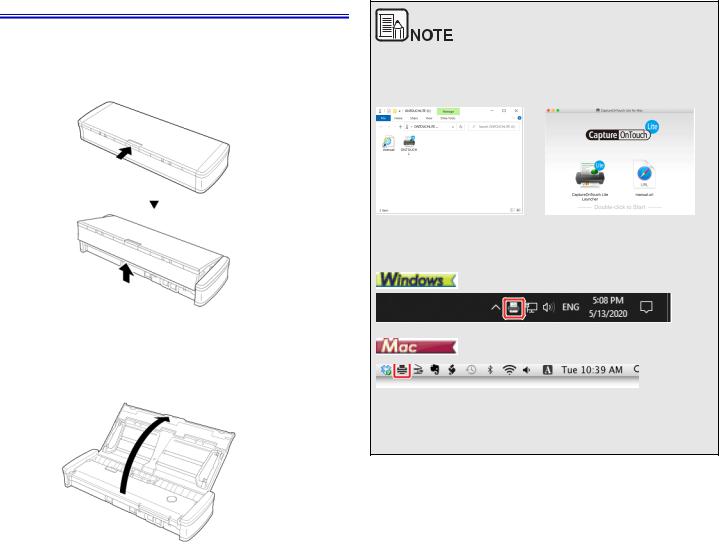
Turning the Power ON
1Raise the feed tray slightly while pressing the feed tray release lever.
Opening the scanner document feed tray switches on the power supply automatically.
2Extend the front panel of the feed tray before opening the entire feed tray.
The scanner turns ON, and the Start button lights.
When the scanner is turned ON while the operating system of the computer is running, a screen for starting CaptureOnTouch Lite is displayed on the computer. For details on screen operations, see "Scanning with CaptureOnTouch Lite" on p.23.
When the scanner is properly connected to the computer, the  (CaptureOnTouch Lite icon) appears on the taskbar as follows.
(CaptureOnTouch Lite icon) appears on the taskbar as follows.
If the taskbar icon appears as  or
or  the scanner is not properly connected to the computer. Check the status of the power and USB cable.
the scanner is not properly connected to the computer. Check the status of the power and USB cable.
18

Chapter 4 Placing Documents |
|
This section describes how to load a document for scanning. |
|
Documents .......................................................................................... |
19 |
Loading a document........................................................................... |
21 |
Loading cards ..................................................................................... |
22 |
Documents
The scanner can scan documents ranging in size from business cards and checks to LTR/A4/LGL. The document sizes that this scanner can scan are shown below.
Plain Paper
Size
Paper weight
Loading capacity
Width: 50.8 mm to 216 mm (2" to 8.5") Length: 70 mm to 356 mm (2.756" to 14")
64 to 128 g/m2 (0.08 to 0.15 mm (0.0031" to 0.0059"))
Approx. 20 sheets (64 g/m2 (17 lb bond))
Make sure stacks do not exceed 3 mm in height
19
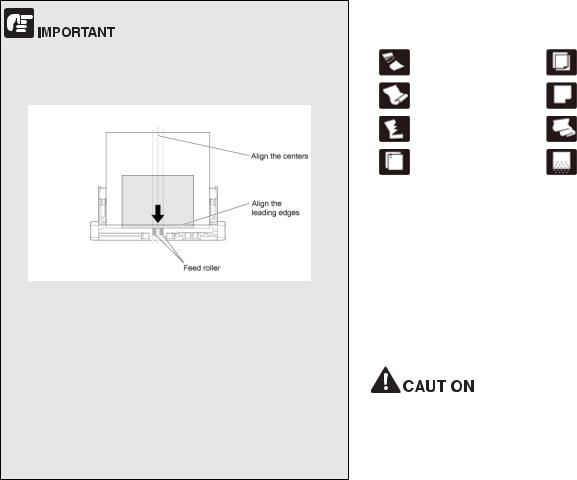
A document must meet the following criteria to be scannable:
When scanning multiple documents of different sizes, place the documents so that they cover the entire span of the feed rollers.
Scanning documents before the ink is dry can cause problems with the scanner. Always make sure that the ink on a document is dry before scanning it.
Scanning documents that are written in pencil or similar material may make the rollers and scanning glass dirty, which can lead to smudges on the scanned image and transfer the dirt to subsequent documents. Always clean the internal parts of the scanner after scanning such documents.
When scanning a two-sided document that is printed on thin paper, the image on the opposite side of each page may show through. In this case, adjust the scanning intensity in the application software before scanning the document.
It is recommended that thin documents are fed one sheet at a time.
Scanning the following types of documents can cause a paper jam or malfunction. To scan such a document, make a photocopy of the document and then scan the photocopy.
Wrinkled or creased |
Carbon paper |
|
documents |
||
|
||
Curled documents |
Coated paper |
|
Torn documents |
Extremely thin, translucent |
|
paper |
||
|
||
Documents with paper clips |
Documents with excessive |
|
or staples |
paper dust particles. |
Business Card
Size |
49 to 55 mm (1.93" to 2.17") x 85 to 91 mm (3.35" to 3.58") |
||
Paper |
128 to 225 g/m2 (0.15 to 0.3 mm (0.0059" to 0.0118")) |
||
weight |
|||
|
|
||
Card (Plastic cards) |
|||
Size |
86 mm (3.39") x 54 mm (2.13") (ISO/IEC standard) |
||
Card |
0.76 mm (0.03") or less |
||
thickness |
|||
|
|
||
Orientation |
Vertical feeding only. |
||
For |
|
|
|
embossed |
Up to 1.4 mm (0.055") |
||
cards |
|
|
|
|
|
|
|
|
|
|
|
Use the card slot when scanning plastic cards.
Embossed cards may not be able to be scanned correctly, depending on the type of embossment.
20
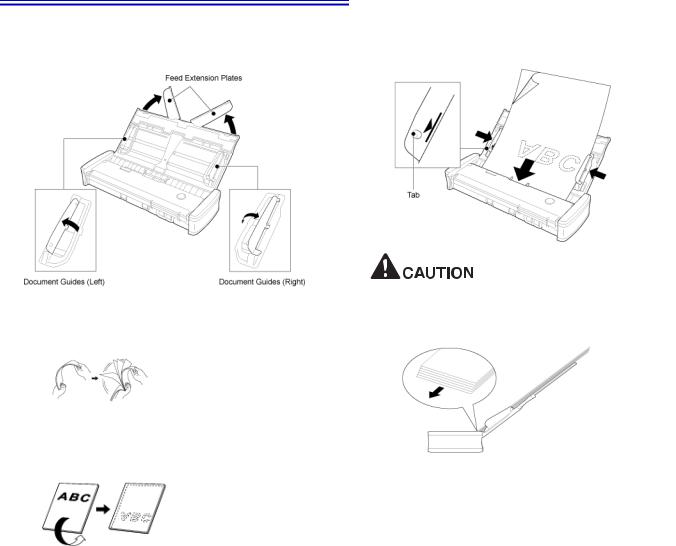
Loading a document
1 Open the feed tray to turn ON the scanner.
2Raise the document guides and feed extension plates.
4Align the document guides with both edges of the loaded document.
•Press the document beneath the tabs of the document guides.
•Up to 20 pages of plain paper can be loaded at the same time. Make sure that the document does not exceed the loading limit marks (  ) on the document guides.
) on the document guides.
When loading a multi-page document, place the pages of the document with their edges slightly askew.
3Load the document.
• Before you load the document, thoroughly fan the pages.
•Straighten out the creases and folds at the ends of the manuscript.
•Load the document into the feed inlet of the scanner with the scanning side of the document face down and the top of the document pointing down.
If the document is curved, straighten the document before loading it.
The scanned document is ejected from the front. Do not place any objects in front of the scanner.
21
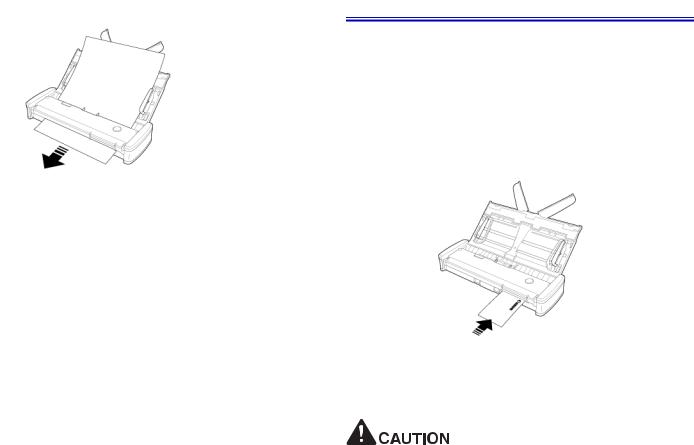
If double-feeding occurs, reduce the number of pages that you load into the scanner at one time.
When scanning small size of multiple documents such as receipt, use documents which have the same width.
Depending on paper quality, you may hear unusual noises while scanning some documents, but this does not indicate a malfunction.
Loading cards
Use the card slot when scanning plastic cards. Use the following procedure to scan the cards one by one.
1 Open the document feed tray.
2Turn the card face up, and insert the card straight into the card slot.
When the edge of the card touches the slot, the rollers will move automatically. The roller will stop when it has caught the edge of the card, allowing you to let go of the card and start scanning from an application.
The card will be fed when you start scanning with an application program. After the card has been fed completely, the rollers will turn in the opposite direction and scanning of the card will start.
The scanned card will be ejected from the front card slot.
The card slot is disabled when documents are placed on the feed tray. When you want to insert a card in the card slot, remove any documents from the feed tray.
During scanning, a portion of the card will protrude from the rear card slot at the rear of the scanner. Keep the area in front of the rear card slot clear of objects.
Embossed cards may not be scanned correctly, depending on the type of embossment.
22
